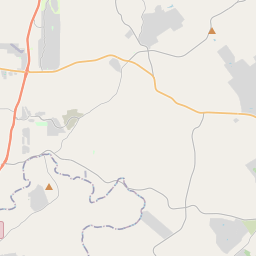New Braunfels Schuetzen Verein
Historical marker location:






The New Braunfels Schuetzen Verein organized in 1849 as one of the nation's early shooting clubs. German immigrants founded the town only four years earlier in 1845 and brought the tradition of target shooting to America from their homeland. The need to provide food and protect homes also necessitated the practice in the New Braunfels area, as many early settlers joined the organization.
As the city of New Braunfels grew, the Schuetzen Verein moved several times to avoid residential areas. The club moved in the years prior to World War I and then again when New Braunfels doubled in size in the years after World War II. It was also during this time that the Mission Valley Schuetzen Verein merged with New Braunfels' club. In the following decades, New Braunfels continued to grow, especially as it became part of an extended metropolitan area. With the city's continued expansion, the shooting club relocated again.
The Schuetzen Verein's most important event is the Koenig (King) matches held annually since before the Civil War. An important tradition in the community, members continued it even through the ammunition shortages of the Civil War and World War I, sometimes firing only once each to maintain status of the organization.
After more than 150 years of existence, the New Braunfels Schuetzen Verein continues to meet, serving as a reminder of the town's German heritage and historic past. (2006)
As one of the most visible programs of the Texas Historical Commission (THC), historical markers commemorate diverse topics in Texas history, including: the history and architecture of houses, commercial and public buildings, religious congregations, and military sites; events that changed the course of local and state history; and individuals who have made lasting contributions to the state, community organizations, and businesses.
The state of Texas was once an independent country known as the Republic of Texas. It gained independence from Mexico in 1836 and was a separate nation until it was annexed by the United States in 1845.
In the early 19th century, German immigrants began to arrive, attracted by the fertile land and opportunities for a better life. These settlers established small farming communities and brought with them their language, traditions, and expertise in agriculture and craftsmanship. The town of New Braunfels was founded in 1845 by Prince Carl of Solms-Braunfels, becoming the first German colony in Texas.
The mid-19th century saw significant growth and development in Comal County, with the construction of schools, churches, and businesses. The area became known for its thriving agricultural industry, with farmers cultivating crops such as cotton and corn. The arrival of the railroad in the late 19th century further spurred economic growth and provided easier access to markets.
Throughout the 20th century, Comal County continued to evolve and adapt to changing times. The county's strong German heritage remained at the forefront, celebrated through events like Wurstfest, a German sausage festival. The tourism industry also grew, with visitors flocking to the county's natural attractions, such as the iconic Guadalupe River and historic Gruene Hall, Texas' oldest continually operating dance hall.
Today, Comal County is a vibrant and thriving community, blending its rich history with modern amenities and a strong sense of pride in its cultural heritage. With its beautiful landscapes, strong economy, and warm Southern hospitality, Comal County continues to be a desirable place to live and visit.
Comal County Timeline
This timeline provides a glimpse into the major events and milestones that have shaped the history of Comal County, Texas.
- 1846 - Comal County established as one of the original 23 counties in the state of Texas
- 1847 - Settlement begins in the area with the founding of New Braunfels
- 1850 - Comal County's population reaches 2,013
- 1861-1865 - County residents actively involved in the American Civil War
- 1870 - Completion of the first railroad through Comal County
- 1885 - Jacob's Well, a natural artesian spring, becomes a popular tourist attraction
- 1920s - Economic growth in Comal County, driven by agriculture and manufacturing industries
- 1941-1945 - County residents contribute to the war effort during World War II
- 1968 - Canyon Lake, a reservoir on the Guadalupe River, is completed
- 1990s - Rapid population growth and urban development in Comal County
- 2007 - Construction begins on the controversial Trans-Texas Corridor project